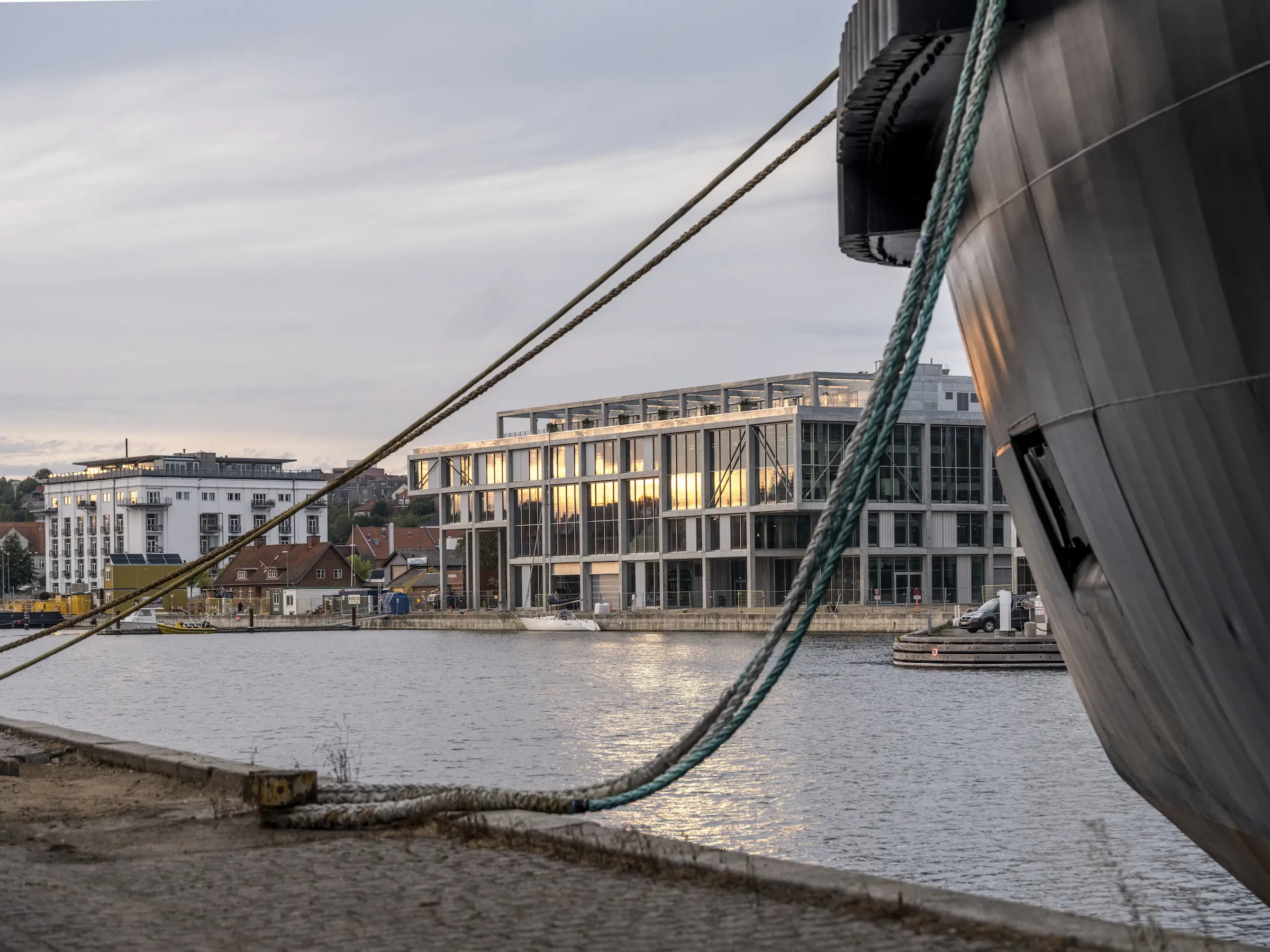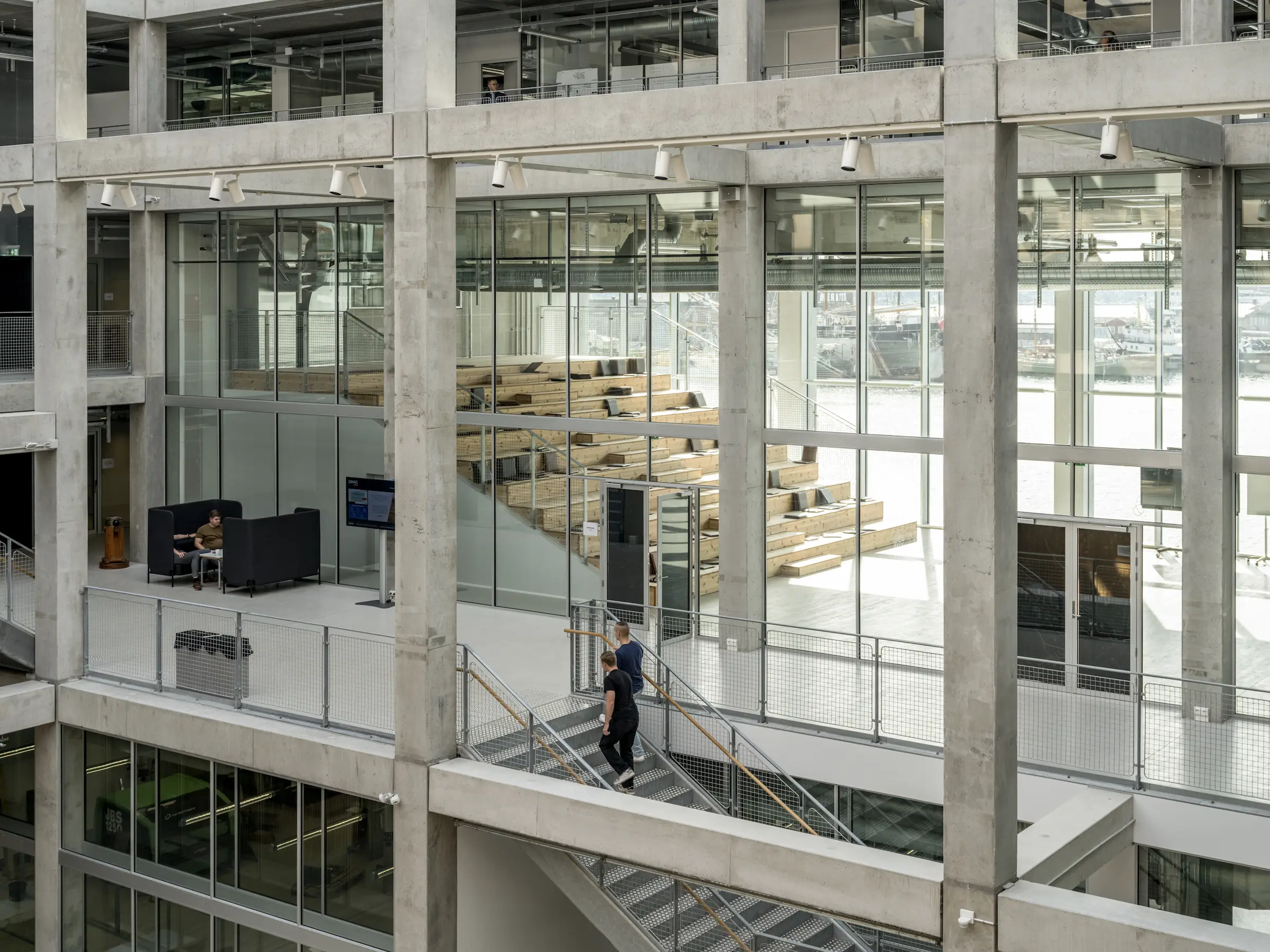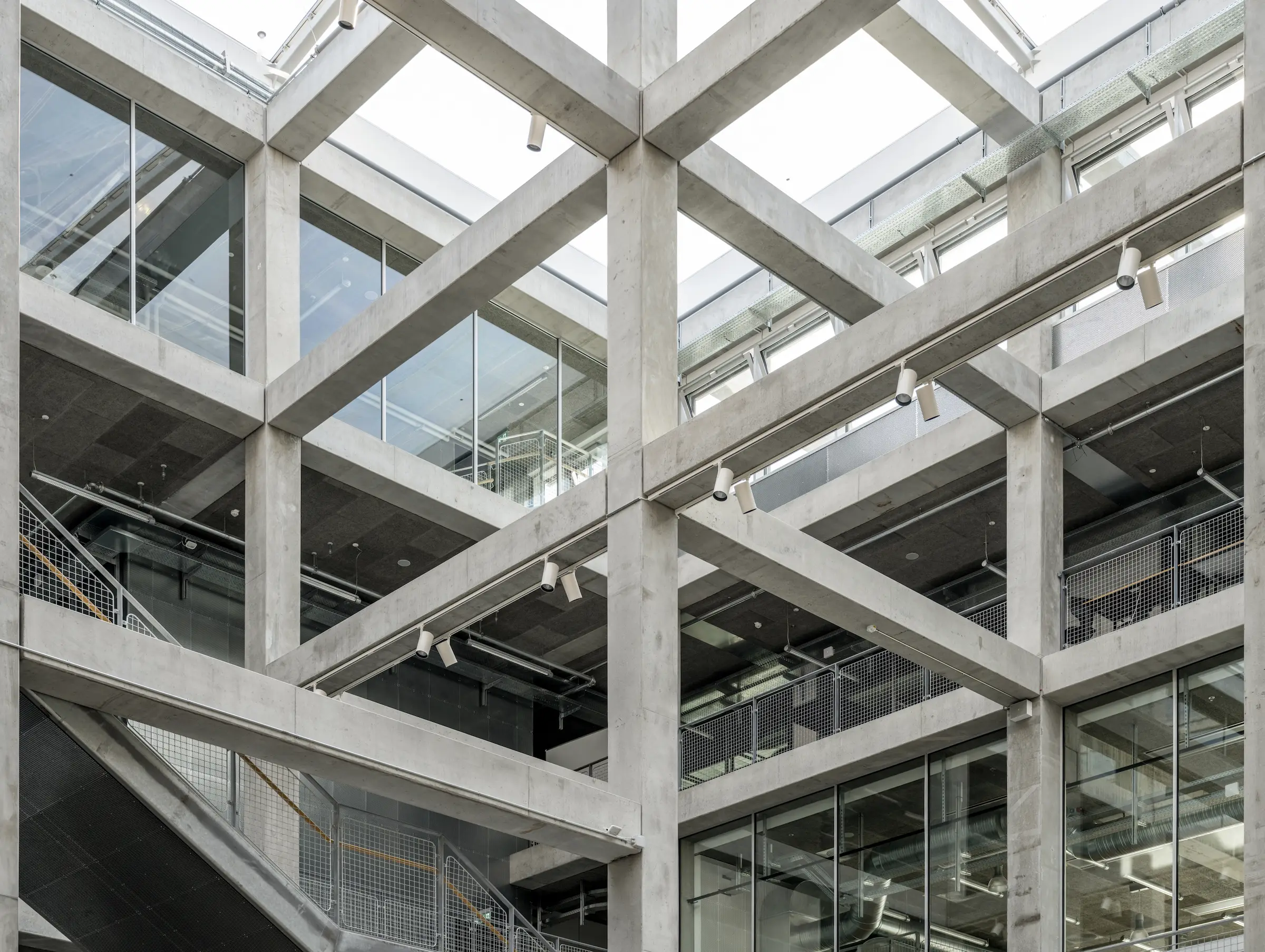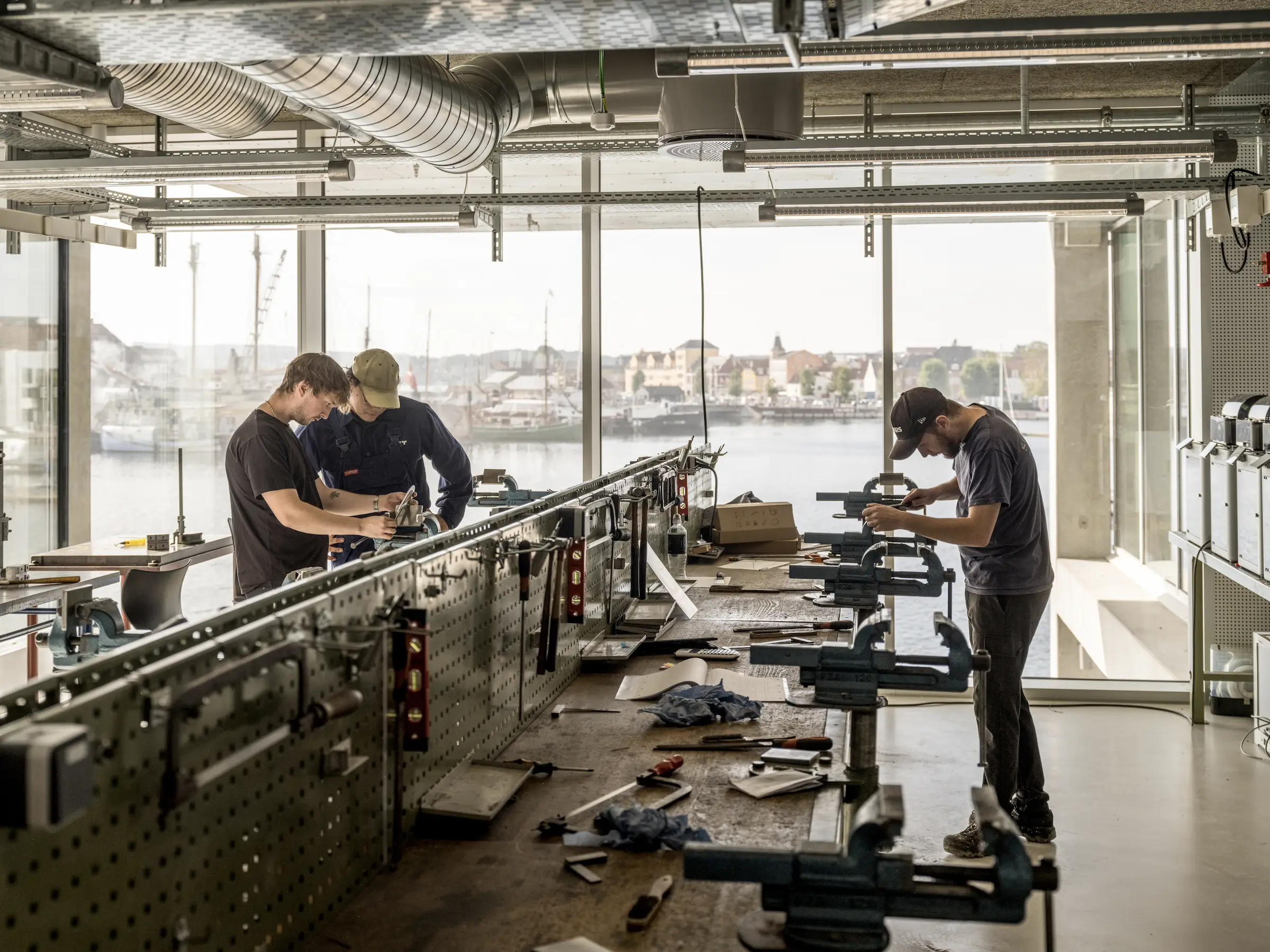A Danish Port City Gains a New Maritime School Fused to the Working Waterfront

An educational project with public elements, SIMAC is a landmark new building in an industrial waterfront area of Svendborg, Denmark, that's being reimagined as a lively new urban district. Photo © Rasmus Hjortshøj
Architects & Firms
Danish firms EFFEKT and C.F. Møller Architects have unveiled a newly completed project that anchors North Quay, an emerging waterfront district in the historic former port city of Svendborg in south-central Denmark. Perched on the water’s edge, the roughly 134,500-square-foot structure, executed by the two firms in collaboration with engineering consultant Artelia, serves as the new home to the Svendborg International Maritime Academy (SIMAC).
The academy, functioning as the largest of its kind in Denmark, was previously housed within various buildings scattered throughout the city—a result of SIMAC itself being formed in 2001 following the merger of several related but independent schools. Featuring classrooms, labs/workshops, administrative offices, a simulator center, two auditoriums, and more than 19,000 square feet of common areas, the new harborside building at North Quay unites 1,000 SIMAC students enrolled in three distinct marine education programs—Marine Engineer, Ship’s Officer, and Master Mariner—for the first time under a single roof.

The new building embraces the gritty seafaring aesthetic of its surroundings in a disused industrial area. Photo © Rasmus Hjortshøj
Described by the design team as a “simple and honest expression based on functionality and utilization,” SIMAC’s prefabricated concrete framework is wrapped in an expansive glass facade that opens the school up to the surrounding site—including its existing industrial neighbors and a new residential quarter—while allowing interior spaces to be flooded with natural daylight. When illuminated during the evening, the boxy glazed edifice functions as a waterfront beacon.

1

2
An airy central atrium (1) serves as a main point of connection at the academy and features a monumental staircase (2) that links the ground-level with a communal rooftop terrace. Photos © Rasmus Hjortshøj
“We set out with the desire to create an extremely raw, and transparent grid structure, contextually adapted to its industrial setting—while capable of staging the school’s workshop-based content into a scaffolding of spatial possibilities, encouraging young people to encounter and exchange ideas through informal meetings—both within and out towards its surroundings, activating the whole harbor front of Svendborg,” explained Mads Mandrup, a partner at C.F. Møller Architects.

A double-height audiutorium located directly off the atrium looks out into the harbor. Photo © Rasmus Hjortshøj

Detail of the exposed concrete framework. Photo © Rasmus Hjortshøj
Establishing a strong spatial connection between the school and its surroundings was a key concern from the project’s beginnings, when their porous, pared-back design for SIMAC was selected out of competition. “This has succeeded to a high extent because you see the same raw, minimalist, exposed column-girder structure both from the outside and the inside,” added EFFEKT co-founder Sinus Lynge.

3

4
Commnunal study areas (3) along with classrooms and specialized labs and workshops (4) are positioned to promote transparency and interaction between students. Photos © Rasmus Hjortshøj
Organized around a 65-foot-high atrium with a soaring central staircase that extends from the ground-level to a rooftop terrace, the academy’s exposed concrete surfaces and durable flooring were built to withstand heavy use and accommodate unique educational tools such as a colossal ship engine located in the machine laboratory and a welding simulator. Flexibility plays heavily into the building’s open, collaboration-fostering design; classrooms, workshops, and other spaces can easily be reconfigured in the future without compromising the building’s structural integrity. To that end, the design team notes that it “avoided superfluous materials, which is why everything is exposed, and no unnecessary ceilings, facades, or surface coverings have been used.”
Further establishing a connection with Svendborg’s old quay as it enters a new chapter, SIMAC’s supporting corner columns have been removed while the upper floors extend out over the entrances “like tall canopies,” inviting visitors to access the school’s communal facilities including a café, canteen, and the rooftop terrace, which offers panoramic views of the harbor. In this sense, the project functions not just as an educational building but as a community-anchoring public asset.

As the sun sets, the boxy glazed building lights up the harborfront. Photo © Rasmus Hjortshøj
SIMAC is part of the first completed stage in the larger masterplan for the 13.6-acre North Quay redevelopment zone, which will also give way to open green space, a maritime business park, and homes along this once down-and-out stretch of industrial waterfront.







